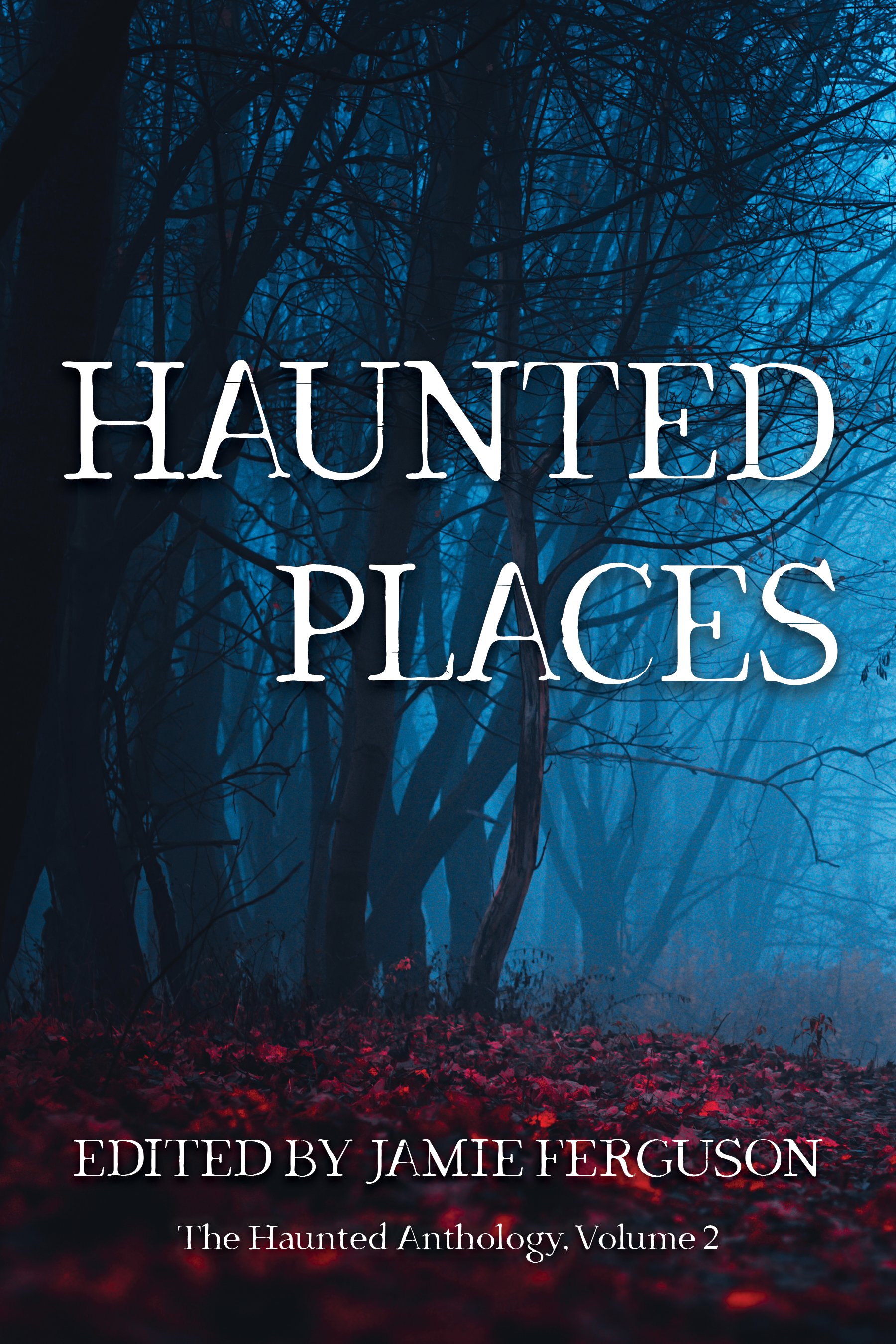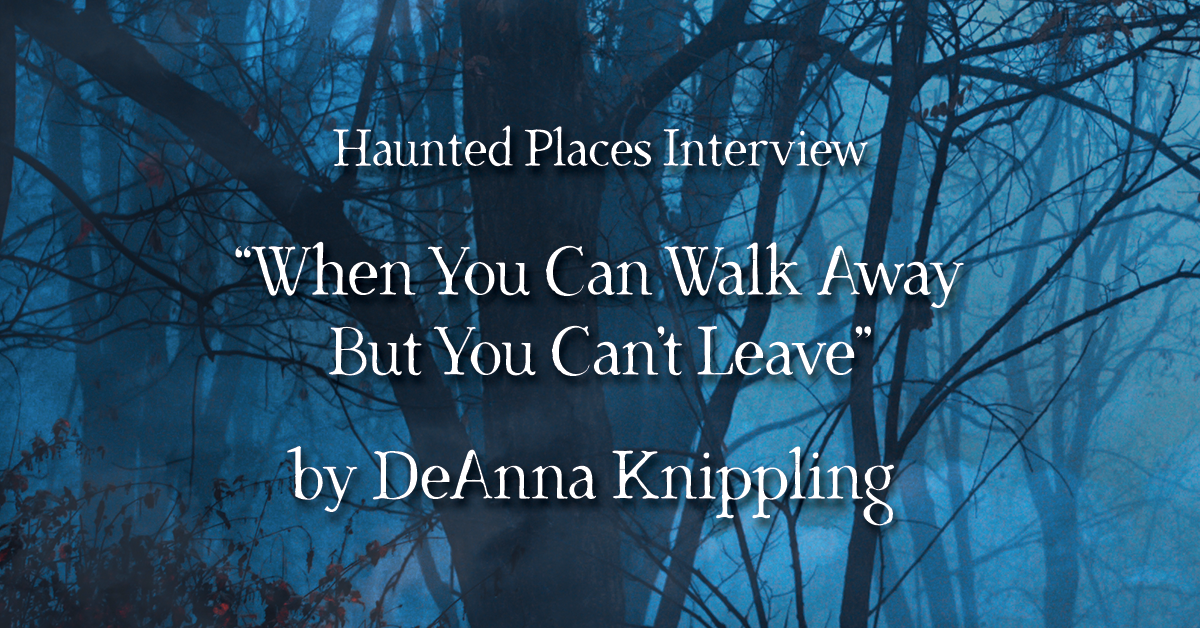Interview: Story Spotlight: “When You Can Walk Away But You Can’t Leave” by DeAnna Knippling
Running a haunted escape room sounds like fun—until the ghosts aren’t just part of the game, and walking away isn’t as easy as it should be.
In “When You Can Walk Away But You Can’t Leave,” DeAnna Knippling twists hauntpunk atmosphere with sharp emotional undercurrents, building a story where tech, trauma, and supernatural entrapment collide. Sharon’s creation—a haunted escape room—was supposed to be a controlled scare. Instead, it’s a reflection of something far more dangerous: the ghosts we build inside ourselves. Brutal, brilliant, and darkly resonant, this story blurs the lines between artifice and emotional truth.
Interview Questions
What, to you, makes a place feel truly haunted—not just eerie or unsettling?
I’m not sure what the difference is between those things; I’ll have to think. I do feel like I’m attuned to the atmosphere of a place, quickly picking out potential danger signals.
Often those danger signals don’t play out into actual danger, but later I can go back and figure out why I picked up on them, and it’s usually a valid reason, if maybe not as extreme as I feel it in the moment. Let’s call that feeling like a place is unsettling. I’ll often feel unsettled around pushing, shoving crowds or
during rush hour traffic.
To me, something is eerie when you can’t tell whether it’s a threat or not. To me, it’s a feeling that goes along with subconsciously noticing that something that is usually there is missing. If I can’t put a finger on what’s wrong with a place, I can usually back up and ask myself what I expected to be there, and
which isn’t. I’ll often feel that places that are empty feel eerie. A forest where the birds are silent or a shopping mall that’s open but without anyone in it is eerie.
Haunted…
I’m gonna say something feels haunted to me when there’s something present that is emotionally fraught but that people don’t acknowledge. A ghost isn’t an absence where there shouldn’t be one, but the feeling of presence where there shouldn’t be one, for example, an amputated finger that feels like it’s still there.
Often that presence is accompanied by feelings of shame and guilt, a desire to have things work out differently. Or it’s accompanied by nostalgia, a desire to return to the past where things seemed easier or more pleasant.
I’m gonna say for my story (while trying not to spoil anything here), the haunting represents a layer of unearned power that’s being exerted over and through a place.
Why did you decide to use a haunted attraction setting?
I like haunted houses and attractions like Meow Wolf (and shops like IKEA) that move participants through spaces where the atmosphere is crafted and doesn’t happen naturally. I got to thinking about what I liked about those spaces (the immersive experience) and what felt dangerous or unsettling about them
(using them to remove control from how participants see the world). I’m also not blind to the way power is being framed in social media spheres now, and I wanted to think about what it felt like to participate in those spheres as a creative person, knowing that the spaces I participate in are, well, sort of haunted by abuses of power.
This story feels like it’s haunting the reader as much as the protagonist. Were you aiming for that kind of immersive discomfort? If so, why?
You might say that, but that kind of thought I really only had after I was done with the story. The questions behind the story haunted me while I was writing this. Why wouldn’t they also direct themselves at the reader?
The way ghosts, tech, and spiritual horror mix in this story creates a compelling tone. Was that planned from the beginning, or did it sneak in as the story developed?
It snuck in. I didn’t really plan the story so much as start with the experience of having to drive through a terrible parking lot behind a building to find a parking place one day. I think I was going to a plant store. I sat down to write this story and it was almost like the parking lot came first, the car second, Sharon third, then the idea of artists creating a haunted house (versus a corporation), then everything else.
Typing my answers, I can still hear what that car door sounds like.
What are you working on now—and what’s fun or exciting about it?
I’m writing something called THOUSANDEYES, the third novel in the near-future noir Company Justice series. Heh. It’s SF rather than fantasy and has zero ghosts in it, but now that I think about it, it’s almost more about a haunted video game than anything else.
The first two books are MINDSIGHT and DARKSCAN. I wrote them under a pen name (for reasons too long to get into here) as Dean Kenyon. I’m working to get the covers updated so I can re-released them under my own name, then have THOUSANDEYES ready to go after that.
About the Author
DeAnna Knippling writes atmospheric gothic horror, mystery, suspense, and twisted tales from the edge of space & time. Her hobbies are cooking, taking long walks on Florida beaches, digging into the realm of open-source intelligence, fangirling over history, science, and psychology—and reading lots of fiction, graphic novels, and web comics while her tea goes cold.
Find DeAnna at: WonderlandPress.com
Read the Story
“When You Can Walk Away But You Can’t Leave” appears in Haunted Places, available now from Blackbird Publishing.
📚 Buy the book from your favorite store


